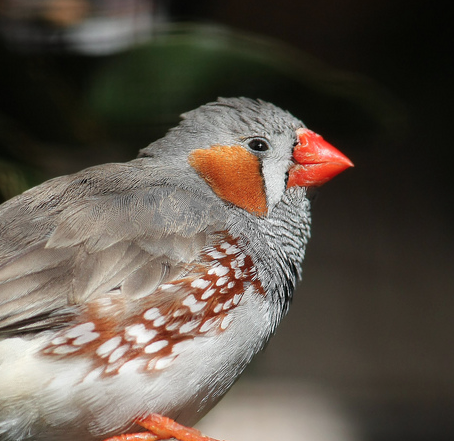New Scientist
Image: Adrian S Jones
It’s not just great minds that think alike. Dozens of the genes involved in the vocal learning that underpins human speech are also active in some songbirds. And knowing this suggests that birds could become a standard model for investigating the genetics of speech production – and speech disorders.
Complex language is a uniquely human trait, but vocal learning – the ability to pick up new sounds by imitating others – is not. Some mammals, including whales, dolphins and elephants, share our ability to learn new vocalisations. So do three groups of birds: the songbirds, parrots and hummingbirds.
The similarities between vocal learning in humans and birds are not just superficial. We know, for instance, that songbirds have specialised vocal learning brain circuits that are similar to those that mediate human speech.
What’s more, a decade ago we learned that FOXP2, a gene known to be involved in human language, is also active in “area X” of the songbird brain – one of the brain regions involved in those specialised vocal learning circuits.
Andreas Pfenning at the Massachusetts Institute of Technology and his colleagues have now built on these discoveries. Read more on newscientist.com…








